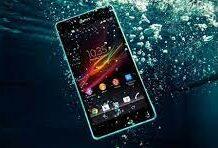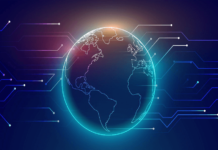We all use computers in our daily lives. Whether for personal use or professional use, the computer has become a staple machine in our lives. However, have you ever wondered how computers came to exist? Do you know the history behind the development of computers? In this article, we are going to answer these questions. This article gives an introduction to the different computer generations and how they came to be. Read on to find out about the history, innovations, and advancements in the field of computers.
Table of Contents
Computer Generations
Firstly, let us understand the meaning of computer generations. What do we mean by computer generations? Computer generations refer to the chronological development of computer technology. The computer technology that we use today is very different from the original computer technology. Every new computer generation brought about a revolutionary change in computer technology. Each generation witnessed the advent of new technology that was far more advanced than the previous one. Thus, computer generations are characterized by breakthroughs in the field of computer technology.
You may now ask – How many computer generations are there? There are five computer generations in all: the first generation, second generation, third generation, fourth generation, and fifth generation. Currently, the fifth generation is going on. With each new generation, computers became cheaper, more compact, and more powerful. Additionally, computing technology got increasingly advanced and led to more efficient functioning. Initially, there was the boundary of computer generations based on new hardware technology. However, in recent times, hardware and software are both constantly developing. Let us have a look at each of the computer generations in detail.
First Generation of Computers
The first generation dates from 1946-1959. The main component of the computers at that time were vacuum tubes. Thus, the first generation of computers is also known as vacuum tube computers. These computers were huge, sometimes taking up an entire room! The vacuum tubes were responsible for the processing function of the computer. At times, they were also responsible for the memory of the machine. Vacuum tubes used up a lot of electricity. This often resulted in short circuits and malfunctions. Additionally, these computers generated a lot of heat. Therefore, air conditioners also had to be installed.
The computing of the first generation computers was very simplistic and slow. The computers could only compute on machine coding language and gave a single output at a time. Therefore, programmers had to work for days to code a single input for the computer. A punch card, magnetic tape, and paper printed the output. Thus, it was a very tedious and time-consuming process. As a result, these computers were costly. The vacuum tube computers required the availability of time, money, and lots of other resources. Of all the computer generations, the first generation computers were the biggest and costliest.
Some of the famous computers of this generation were – ENIAC, EDVAC, UNIVAC, and IBM. The full form of ENIAC is the Electronic Numerical Integrator and Calculator. Next came EDVAC. The full form of EDVAC is the Electronic Discrete Variable Automatic Computer. The creators of ENIAC also came up with UNIVAC, and UNIVAC stands for Universal Automatic Computer. These are the various most commonly known first-generation computers. Scientists and programmers started coming up with innovative technology to replace the expensive and bulky vacuum tubes computer. Thus, the first generation of computers paved the way for the next computer generations.
Second Generation of Computers
The next generation of computers, namely, second-generation computers, developed from 1959 to 1965. Due to the limitations of the first generation computers, scientists started developing new designs for the computer. The first generation of computers used vacuum tubes as their main component. Similarly, second-generation computers used transistors. Thus, transistors were the main component of the second generation of computers. Transistors were cheaper, smaller, and more potent than the vacuum tubes. Therefore, the second generation computers were faster, reliable, and less expensive compared to the first generation of computers.
A characteristic feature of second-generation computers is that they operated on the high-level programming language. Thus, the limitation of coding through machine language was no longer present. Some of the popular higher-level programming languages, such as the earlier versions of COBOL and FORTRAN, developed during this time. Additionally, memory storage was another important feature of second-generation computers. The computers stored primary memory in magnetic cores. At the same time, the computers also stored secondary memory in magnetic disks and magnetic tapes. Thus, these became the secondary storage devices. All these features made the second generation computers more powerful.
Some of the popular second-generation computers are IBM 1620, CDC 3600, and UNIVAC 1108. Although these computers were smaller, more reliable, and more powerful, they were still very costly. Therefore, every organization could not afford them. Nevertheless, the second generation of computers gained popularity. And that is how the concept of computer generations started to evolve. First-generation computers used vacuum tubes. Second-generation processors used transistors. What would the scientists come up with next? Let us proceed to the third generation computers to find out future computer technology.
Third Generation of Computers
A revolutionary change came about in computer technology between the time-period of 1965-1971. This period is known as the period of third-generation computers. The invention of integrated circuits brought about a breakthrough in the development of computers. Integrated circuits were like mini transistors. Jack Kilby was responsible for the invention of integrated circuits. The integrated circuits made computers smaller, cheaper, and more efficient than the previous computer generations. Consequently, more people could afford to use computers. Therefore, from the third generation of computers, the computer was available to the masses.
There were many changes in the hardware as well as software technology in the third generation. Scientists used silicon chips, called semiconductors, to mount the integrated circuits. As a result, there was a considerable increase in the speed of processing. Additionally, the introduction of keyboards and monitors occurred in the third generation. Instead of punching cards and papers, scientists began to use keyboards and monitors as input and output devices. This was a significant milestone in the history of computers. The operating system also made an appearance in the third generation of computers. Thus, the simultaneous usage of different applications became possible.
The third-generation computers were the earliest versions of the modern-day desktops that are available too. The first and second-generation computers were elaborate and complex machines. However, the third generation computers resembled the conventional image of computers with a keyboard and a monitor. Some of the accessible third-generation computers were Honeywell-6000 series, PDP (Personal Data Processor), IBM-360 series, etc. Although these computers were cheaper than their counterparts, the average public still could not afford it. Computers were luxury items in those times. This began to change with the next generation – the fourth generation of computers.
Fourth Generation of Computers
The fourth-generation computers developed from 1971 to 1980. The new computer technology in this generation was the microprocessor. A microprocessor was even smaller than the integrated circuits. A single silicon chip could fit many integrated circuits within it! Thus, a machine that earlier took up an entire room could now comfortably sit in one’s palm. This was a great achievement in the field of computer technology. Furthermore, it shows how far scientists have come from their initial experiments with computer technology.
The fourth generation of computers was considerably cheaper. Thus, computers became available to the common public for the first time. This is also the period when Personal Computers (PC) were introduced. Therefore, computers were now available for personal use at home. These computers were smaller, faster, and more advanced than ever. The electricity consumption of these computers was also lower as compared to the previous computers. All these features made it a revolutionary piece of machine for the public. Big companies like IBM and Apple launched Personal Computers (PC) for the public. Thus, the era of computers began to evolve rapidly.
These computers used high-level programming languages such as C, C++, etc. The features became progressive, and many new applications came about. Additionally, the concept of the internet started doing the rounds. Different companies launched multiple computers during this generation. Apple launched the Macintosh.
Further, IBM also launched some home computers. All in all, the fourth generation computers became accessible and affordable. This was lacking in the previous computer generations. After the fourth generation of computers, the scope of computers has exponentially increased. Let us now look at the last of the computer generations – the fifth generation of computers.
Fifth Generation of Computers
The fifth-generation computers began to emerge around 1980 and are still going strong. Since 1980, a lot of advancements have taken place in computer technology. Brand new concepts like Artificial Intelligence (AI), nanotechnology, and quantum technology were introduced. The technology has reached new heights during the fifth generation of computers. Artificial Intelligence (AI) is the leading component of the fifth generation computers. Robots, virtual reality, voice recognition, and smart devices are developing at an astounding rate. The fifth generation of computers can perform tasks beyond the original functions of a computer.
The hardware of the fifth generation of computers has undergone a complete transformation. The devices are lighter and sleeker than ever. A single-chip contains the entire processing device. Desktops, laptops, tablets, and many other smart devices are now widely accessible. On the other hand, the software has become more sophisticated as well. Newer and refined programming languages are in function.
Moreover, efforts are being made to integrate natural language into the Artificial Intelligence (AI) system. Scientists have already achieved a lot of success with regards to this. The fifth generation of computers offers lots of variety at affordable prices.
Computer generations have come a long way since the first generation of computers. In the first generation, scientists made use of vacuum tubes. Afterward, in the second generation, they used transistors. In the third generation, integrated circuits came into existence. The fourth generation of computers saw the use of microprocessors. Finally, in the fifth generation of computers, Artificial Intelligence (AI) has become the main component. Thus, for each generation, significant technology became the focal point for development. It will be interesting to see what the future has in store for us.
Beyond Fifth Generation
Computer scientists have made significant achievements throughout computer generations. However, is the fifth generation, the last generation of computer technology? We certainly don’t think so! A lot of research and studies are going on in newer arenas of technology. Nanotechnology is a particularly promising field. It has the potential to change the scope of computer technology. Additionally, scientists are fascinated with robotics and are developing a variety of models to test out their theories. These fields are touted to be the next big thing in the world of computer technology.
We already have smart assistants like Alexa and Cortana at our homes. In another decade or so, we could have robot assistants in every household! Thus, the possibilities are endless. Scientists are working on developing intelligence and learning in robots so that they can better understand the human world. However, a note of caution is necessary here. Scientists should be careful while developing new technology. They should keep in mind the ethical considerations while designing new machines. Further, they should also consider the future implications of such technology.
Conclusion
In conclusion, computer generations have seen an exciting trajectory in terms of computer technology. From the earliest abacus in ancient times to a micro-chip in current times, the computing devices have witnessed a radical transformation. The primary function of computers was to perform calculations and give output. Since then, computers have acquired a lot of additional features and applications. Presently, one can use computers to perform a wide range of functions simultaneously. It has become a medium of work, entertainment, recreation, assistance, and much more. It will be exciting to see what the next set of computer generations have in store for us.












